
Course materials
What is a Distributed Team?
- Geographically Distributed or Dispersed Team (GDT) refers to a group of individuals who work across space, but also often across time and organizational boundaries.
- The use of Information and Communications Technology (ICT) constitutes all or a significant portion of the interaction between the team members. Therefore, GDT are called Virtual Teams.

The Bright and Dark Sides of Distribution of Team Members
Success factors for managing distributed teams virtually
- Wikipedia “Virtual Team”
- Beezr Course material on virtual collaboration tools
- DeRosa, Darleen, Lepsinger, Richard (2010), Virtual Team Success: A Practical Guide for Working and Leading from a Distance. Hoboken (New Jersey): John Wiley & Sons,
- Duarte, Deborah L., Snyder, Nancy Tennant (2006), Mastering Virtual Teams: Strategies, Tools, and Techniques That Succeed, 3rd edition. Hoboken (New Jersey): John Wiley & Sons
- McCabe, Laurie, Hurwitz, Judith, Kaufman, Marcia (2009), Collaboration for Dummies: IBM Limited Edition. Hoboken (New Jersey): John Wiley & Sons
- The best employees can be localised all over the world
- Virtual teamwork provides personal flexibility regarding work time
- An organisation with virtual teams can act more flexible to changes in the marketplace
- Development of ideas can be more innovative, more reflection and less groupthink
Three levels of teamwork:
- The team works as a mixture of people: no decisions are made in common
Conversations take place and decisions are made in common. Products are made that could not be made without the team
Team members are strongly committed by the decisions...
Good teamwork starts with
- An initial presentation of you as a person: your interests, your emotional and behavioural characteristics
- A group contract with social codecs regarding accessibility
- Virtual team building
Introduction
Both leaders and members of virtual teams have to know how to use electronic media for communication and collaboration. Nowadays one can choose from a variety of tools but not all of them are always appropriate.
First we have to look at types of tasks versus the communication modes. Table 1 shows an early consideration of McGrath and Hollingshead (1993) adapted by Duarte and Snyder (2006 p. 27).
1 Task versus Communication Mode (Duarte and Snyder, 2006, p. 27)
A rating poor fit may indicate too much or too little social presence or information richnes
Which Communication Media can be used for which content?
The choice of the media should respect the following factors (Konradt, 2002, pp. 88-90):
- Symbolic and social importance of the media:
- Compliment and feedback – personally
- Formal communication (e-mail) for achieving respect, informal communication (talk) to show interest and establish team spirit
- Traditional companies use text based communication, modern companies use fast, less status oriented communication
- Pragmatic factors
- Face-to-face meetings are expensive when team members work remotely
- Video conferences depend on the infra-structure that is available
- Costs for telephone calls, e-mails and video conferences can be different
- Personal preferences of the communication partners
- Different social development of the people results in different preferred media
- Clear preference of face-to-face talks to telephone, e-mail, and voice mail
- Extraverted people prefer face-to-face talks, telephone calls, and voice-mails
- Introverted people prefer indirect asynchronous media as they have more control and can think about their answer before they interact
Communication media have different advantages and disadvantages (see Table 2)
Table 2 Communication media – advantages, disadvantages (Konradt, 2002, pp. 92-93, adapted)
Learn more
- DeRosa, Darleen, Lepsinger, Richard (2010), Virtual Team Success: A Practical Guide for Working and Leading from a Distance. Hoboken (New Jersey): John Wiley & Sons,
- Duarte, Deborah L., Snyder, Nancy Tennant (2006), Mastering Virtual Teams: Strategies, Tools, and Techniques That Succeed, 3rd edition. Hoboken (New Jersey): John Wiley & Sons
- Khazanchi, Deepak, Zigurs, Ilze (2005), Patterns of Effective Management of Virtual Projects. Newton Square (Pennsylvania): Project Management Institute
- Konradt, Udo, Hertel, Guido (2002), Management virtueller Teams, Weinheim: Beltz
- Köster, Kathrin (2010), International Project Management, London: Sage
- McCabe, Laurie, Hurwitz, Judith, Kaufman, Marcia (2009), Collaboration for Dummies: IBM Limited Edition. Hoboken (New Jersey): John Wiley & Sons
- McGrath J.E., Hollingshead A.B. (1993), Putting the “Group” Back in Group Support Systems: Some Theoretical Issues about Dynamic Process in Groups with Technological Enhancements. In Jessup L.M. and Valacich J.S. (Eds.), Group Support Systems: New Perspectives. Old Tappan (New York): Macmillan
- Quade, S., Birkenkrahe, M., Habermann, F. (2012), Manage Projects Smarter: Picking Tools for Small and Medium-Sized Enterprises, ICELW 2012, New York, proceedings; International Journal of Emerging Technologies in Learning (iJET), Vol 8, No 2
What?
Multimedia Design and Communication deals with digital design products to be applied in new media. More specifically a multimedia design professional produces designs and content - text, video, games fx - for websites and mobile applications. As a central part of this, a multimedia design professional does user research in order to satisfy the usability and user experience needs. Planning and executing social media strategies for businesses is another expanding work area for multimedia design professionals.
Who?
Multimedia design and communication professionals often work in design agencies or in marketing and communication departments of companies. Their job titles could be frontend/backend designer or user experience designer. They often work in a team supporting business and marketing management professionals.
How?
Launching a digital product or service requires a lot of research and planning. Here are the steps to take when developing a digital product:
These steps can be carried out linearly, however, most often multimedia designer professionals will jump forth and back between steps working in an iterative mode where you allow yourself to adjust previous steps as the information level in the project increases.
- Project Definition by IPMA (ICB 3.0)
„A project is a time and cost constrained operation to realise a set of defined deliverables (the scope to fulfil the project‘s objectives) up to quality standards and requirements.“
- Project Definition by PMI (PMBOK)
„A project is a temporary endeavor undertaken to create a unique product, service, or result.“
Projects are used for relatively unique processes

Project Design is influenced by several factors
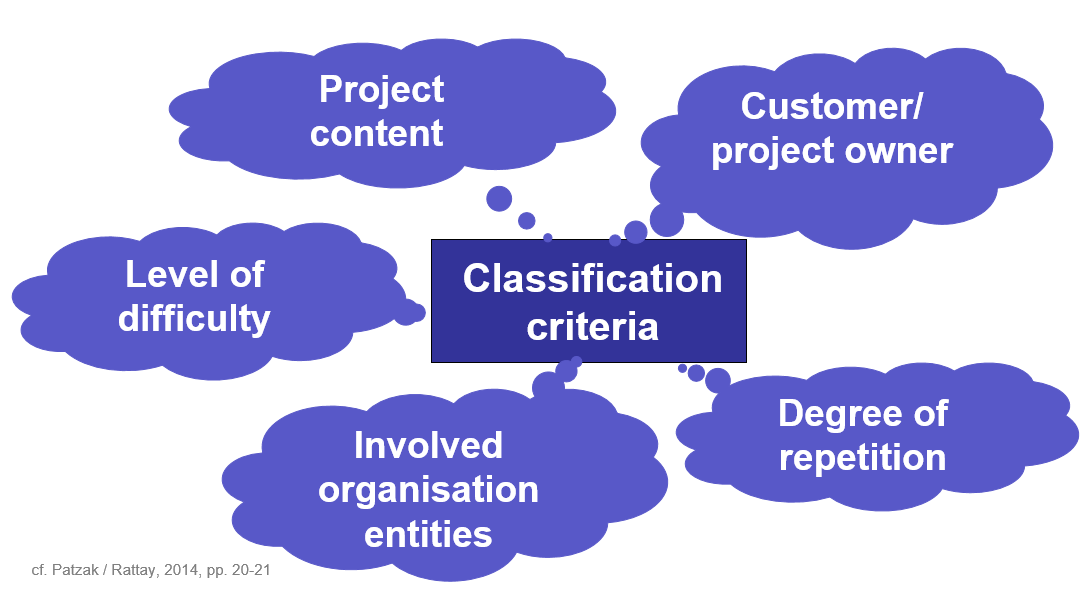
…and can be structured in several ways
Tasks of Project Management
Planning - the definition of what is aimed for
Organizing - bringing it to function
Leading - the goal-oriented guidance of others
Controlling - the tracing with regard to a successful project execution
The 3 Key Elements of Project Management
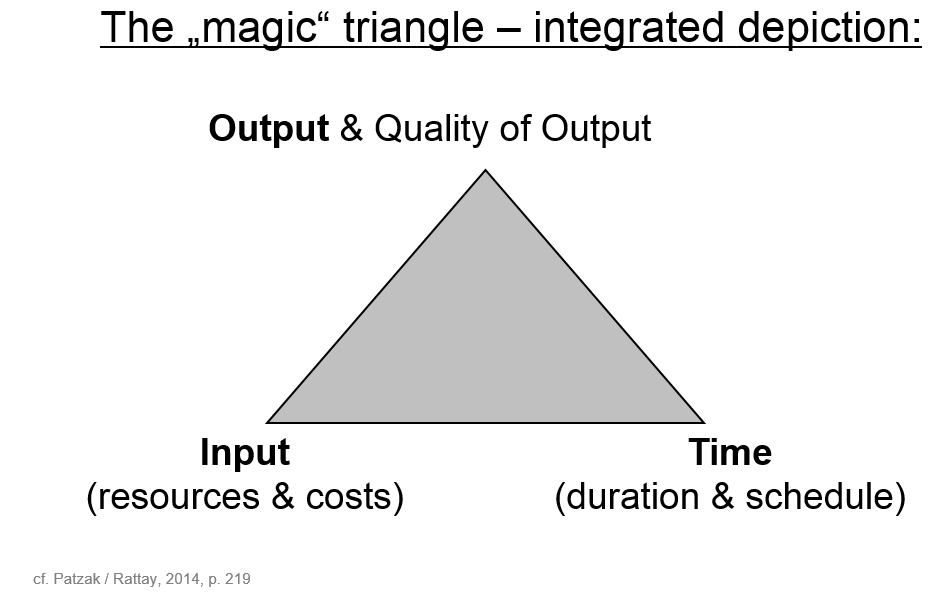
Differences in the Management of Projects and Small Projects
- There are a lot of PM methods available
- Beezr projects only require a few PM tools because of
PM Tool 1 – Project Assignment
- High level summary of the project design what is inside and outside of the project boundary
- Often only rough estimations possible
- Basis for detailed project design in the project start phase

Example: Beezr Project Assignment

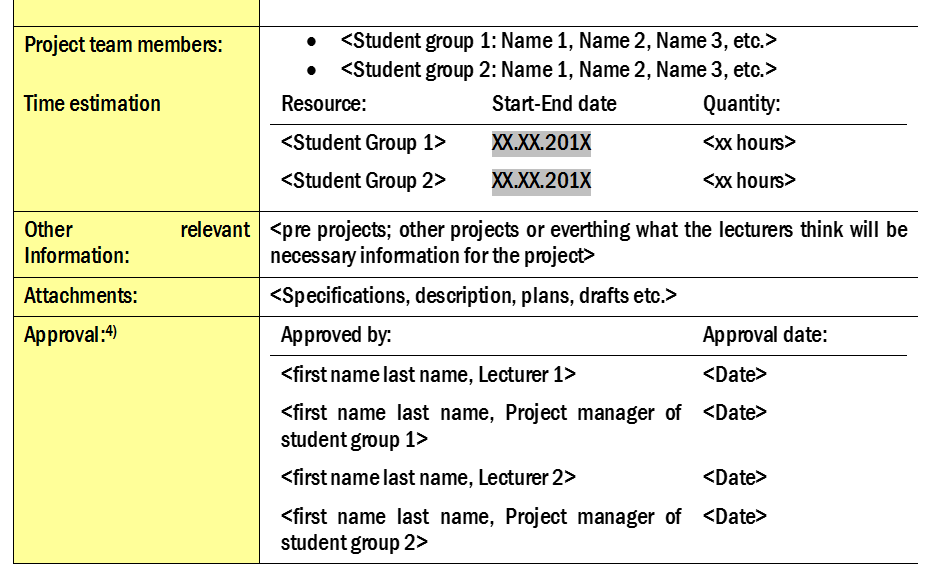
PM Tool 2 - Project Objectives Plan
- „Objective“: A desired future state which should be achieved by the project
- Ensurance of holistic project view
- Consideration of all closely coupled objectives
- Priortization of the objectives, non-objectives
- Operationalization of objectives to assure that reaching the objective can be measured at the project end
Example: Beezr Project Objectives Plan

PM Tool 3 – Work Breakdown Structure (WBS)
- Hierarchical depiction of the project scope
- Systematic gathering of all required project tasks
- Phase-oriented structure recommended
- Segmentation of the scope into sub-units, so called work packages, which can be planned and controlled
Example: Beezr Work Breakdown Structure (WBS)
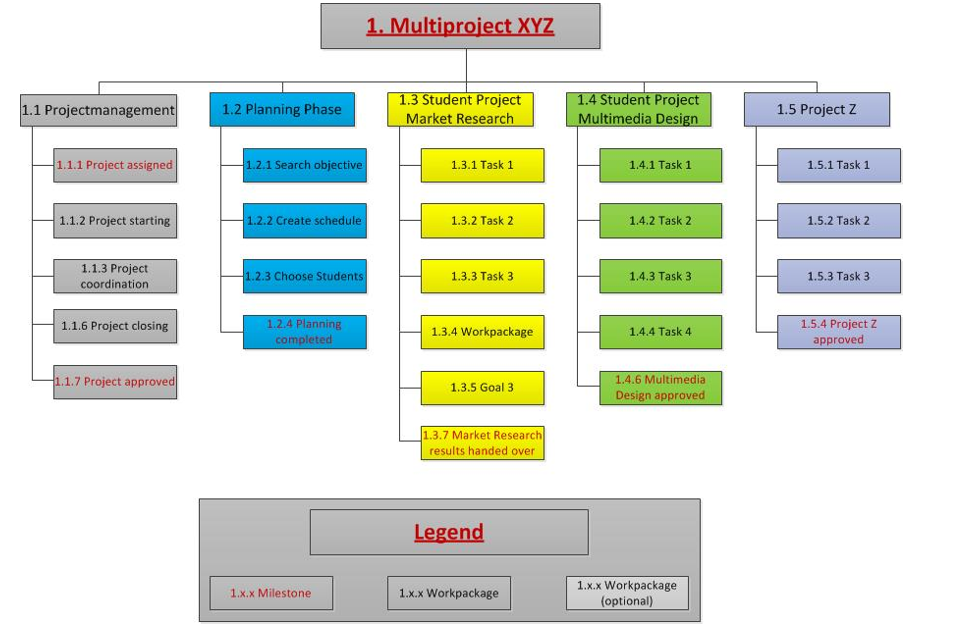
PM Tool 4 – Milestone Plan
- 6-9 milestones per project which show important events to be reached within the project
- 2 standard milestones
- Project assigned
- Project approved
- Event-oriented definition of the milestones
- Scheduling by assigning dates to milestones
Example: Project Milestone Plan
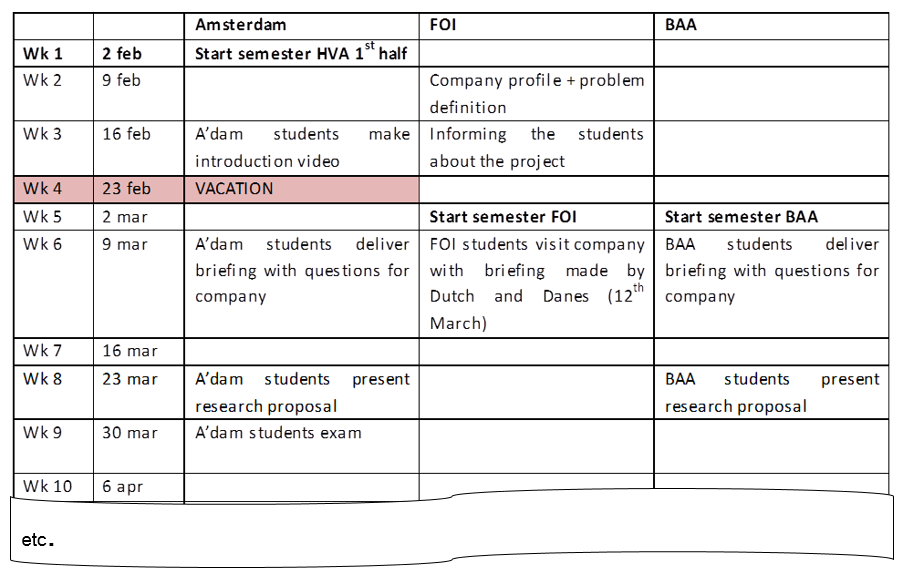
Tool 5 – Project Organization Chart
- Presentation of roles (and communication structures), not persons
- A communication instrument
- Symbolic project management
- The chart is an artefact of the project culture
- Boxes or bubbles, size of boxes, shadows behind boxes, ...
- Quality standards: Date, version, responsible person
- Adaption over time, as the project evolves
Example: Standard Project Organization Chart
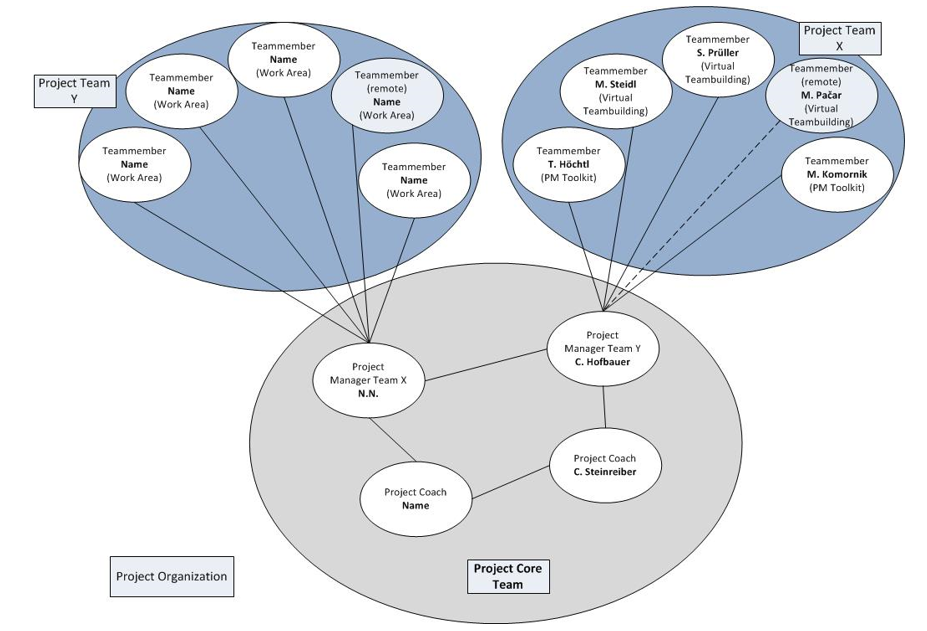
Role: Project Sponsor (Lecturer)
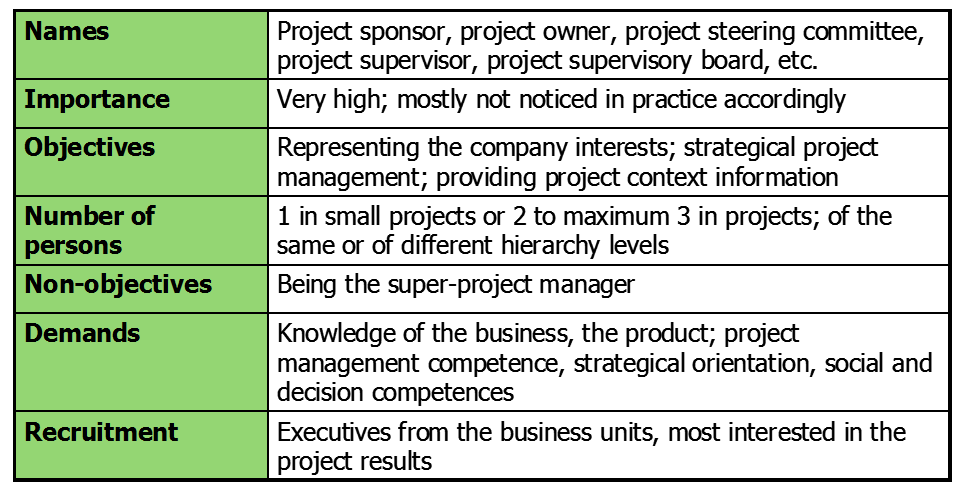
Role: Project Manager
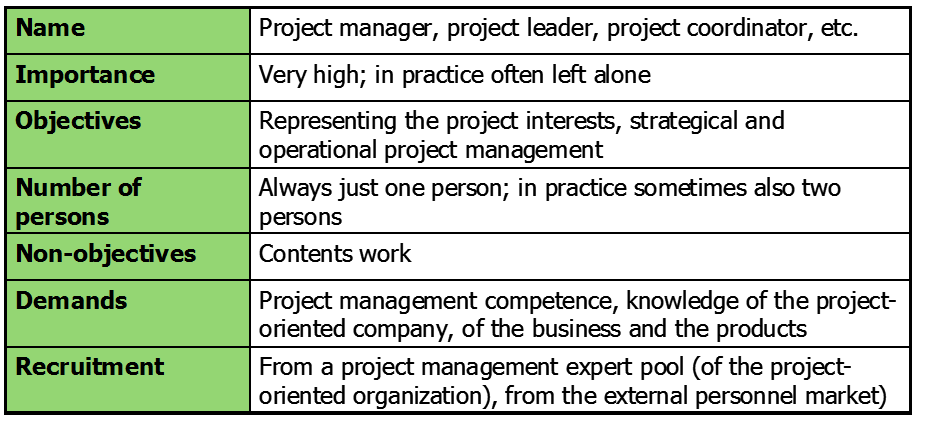
Role: Project Team Member
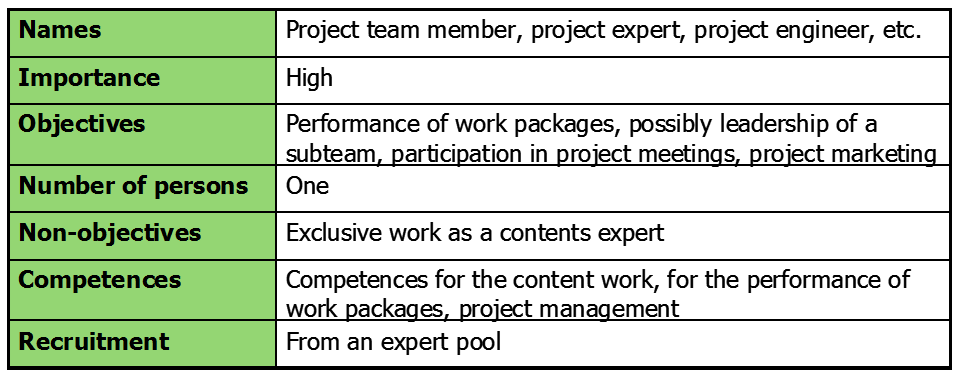
What?
Marketing Communications is all about how companies and organisations communicate about their brands, products or services. Marketing Communications is perhaps the most visible element in the marketing mix, traditionally the P of Promotion. When you think of promotion, you might think of advertising on TV and radio, billboards, newspapers and magazines. Yet, nowadays companies increasingly advertise on the internet and online advertising has become the preferred advertising medium.
Integrated marketing communications is making sure that all communication about the brand is consistent and create synergy. By combining different media channels, offline and online, PR and sponsoring, marketers try to achieve a total effect that is greater than the effect of each separate activity.
Who?
Marketing Communications professionals often work in the marketing and communication departments of companies, the client side. Or they work for an advertising agency, PR or media agencies, or the many small or medium sized production companies.
Their job titles could be marketing consultant, account planner and executive, media consultant, creative director or copy writer. It is their task to find creative ideas and strategies on how best to reach consumers with the aim to inform, persuade or encourage people to buy or engage with the brand.
How?
Launching a marketing communications campaign requires careful research and planning. On the next page you see the steps to take when developing a marketing communications plan.
Learn more
- Wikipedia: Integrated Marketing Communications
- YouTube: 'So what is integrated advertising?'
THERE ARE 4 DIFFERENT KINDS OF COMPANIES:
- Those who make thing happen
- Those who watch things happen
- Those who wonder what happened
- Those who ask if something has happened
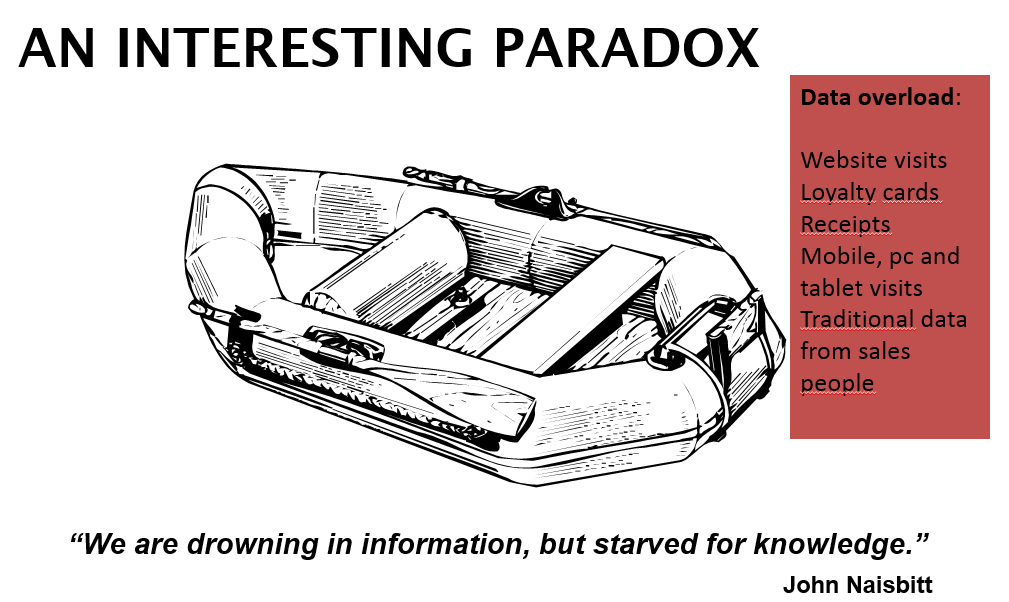
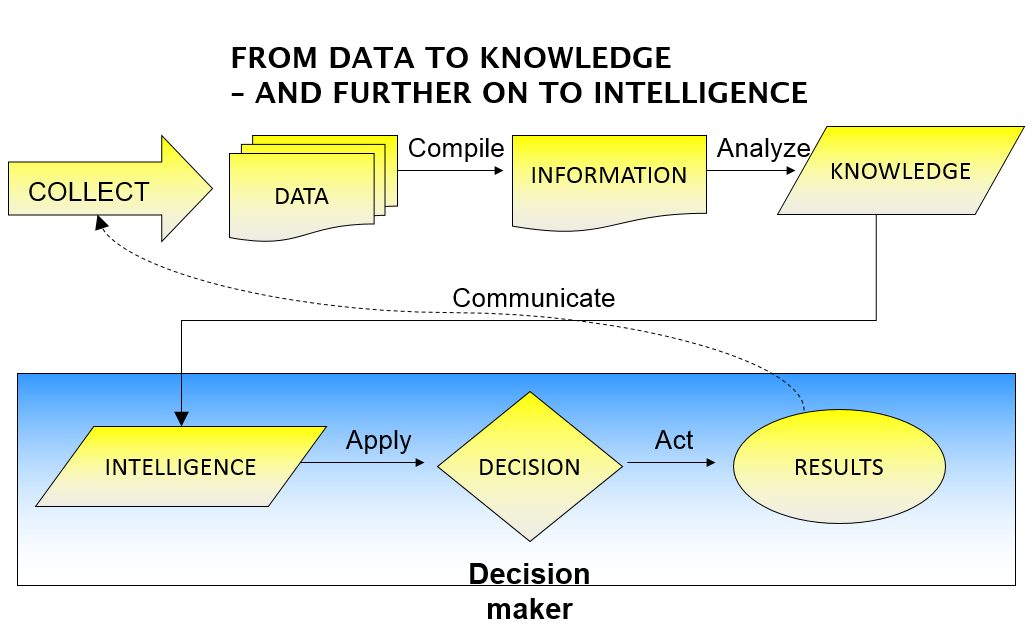
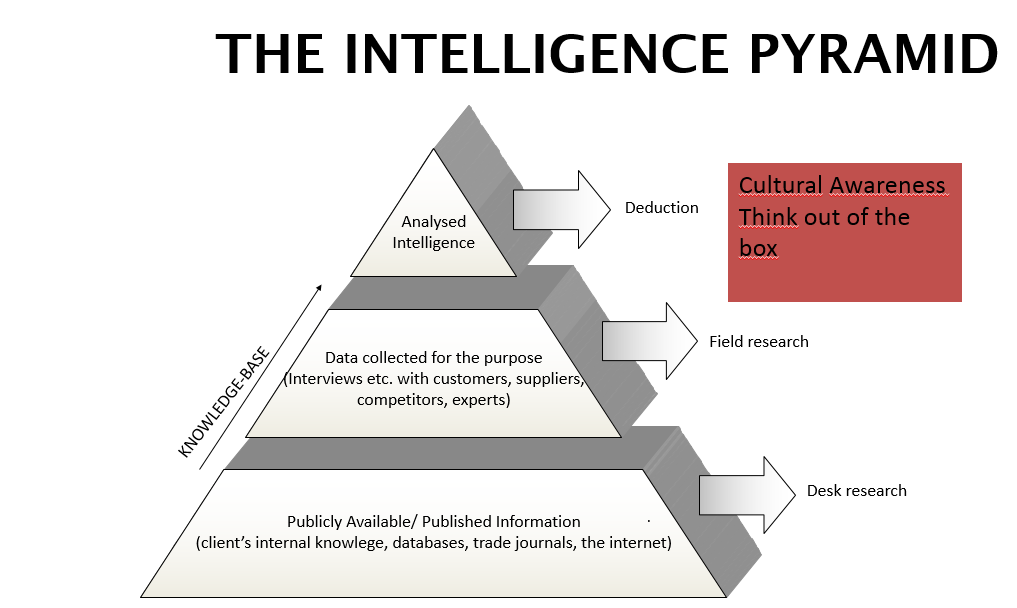
KNOWLEDGE IS THE ROAD TO SUCCESS
Investigate the situation
- Decide what to do
- Plan how to do it

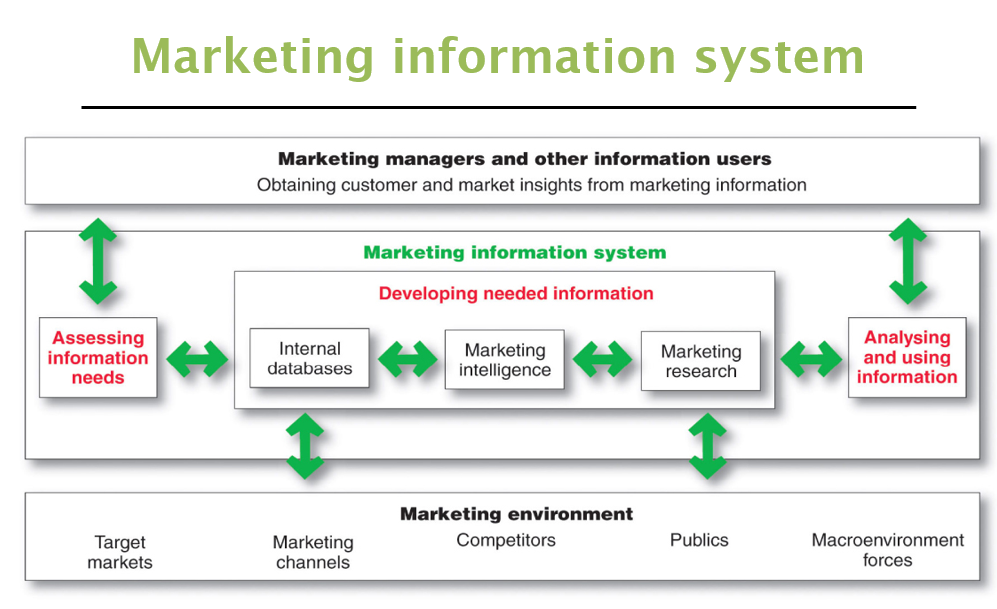
- It is essentially about KEEPING IN TOUCH with the marketing environment
- Many companies have created a CID - Consumer Insight Department or MIS systems
- Information is a source of competitive advantage
MARKETING RESEARCH
To be able to make more qualified decisions
- Based on facts
- Explaining the assumptions
- Asking the right people
- Care about the detail
MAJOR USES OF MARKETING RESEARCH
- Research into Customer Needs and Expectations
- Customer Surveys
- Communication effectiveness
- Similar Industry Studies, e.g benchmarking
- Research into Intermediaries
- Employee Research – image, strengths & weaknesses, morale, internal communication etc.

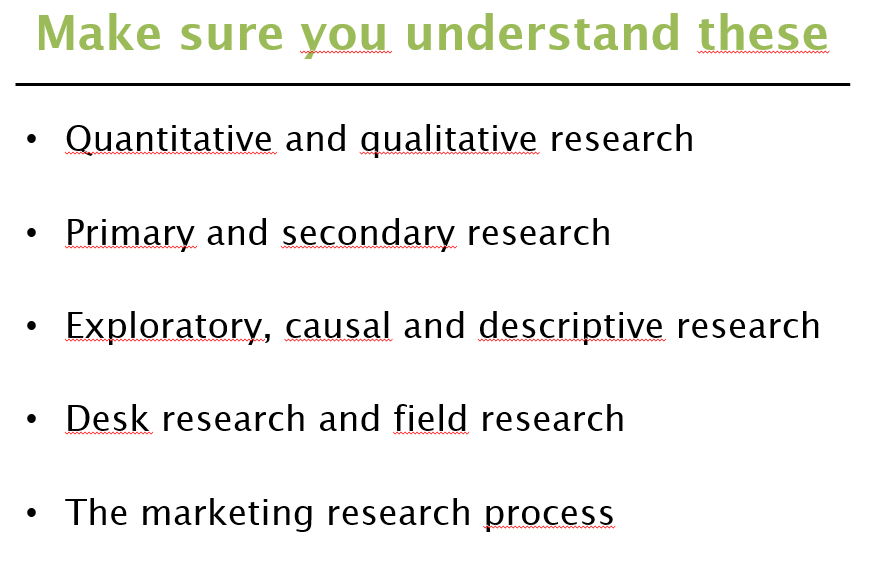
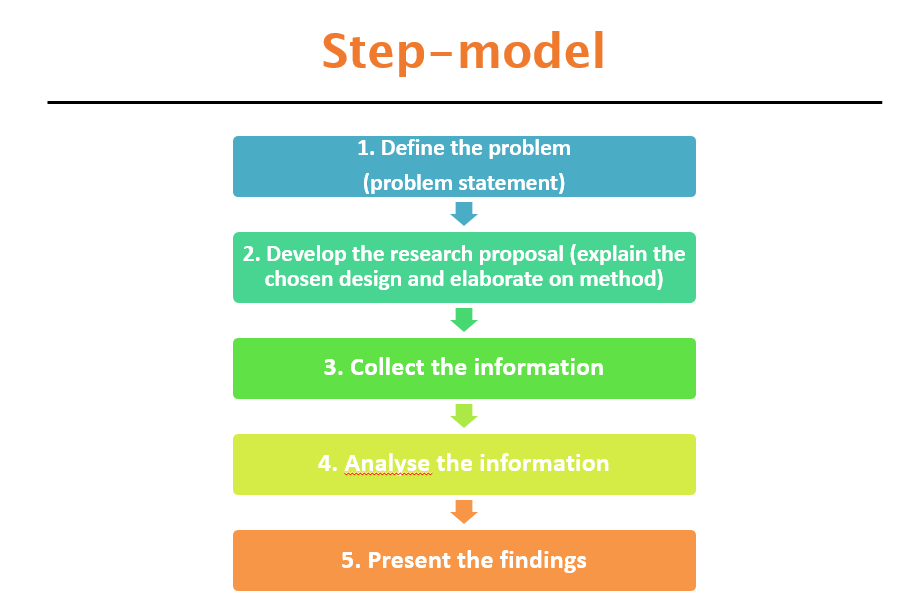
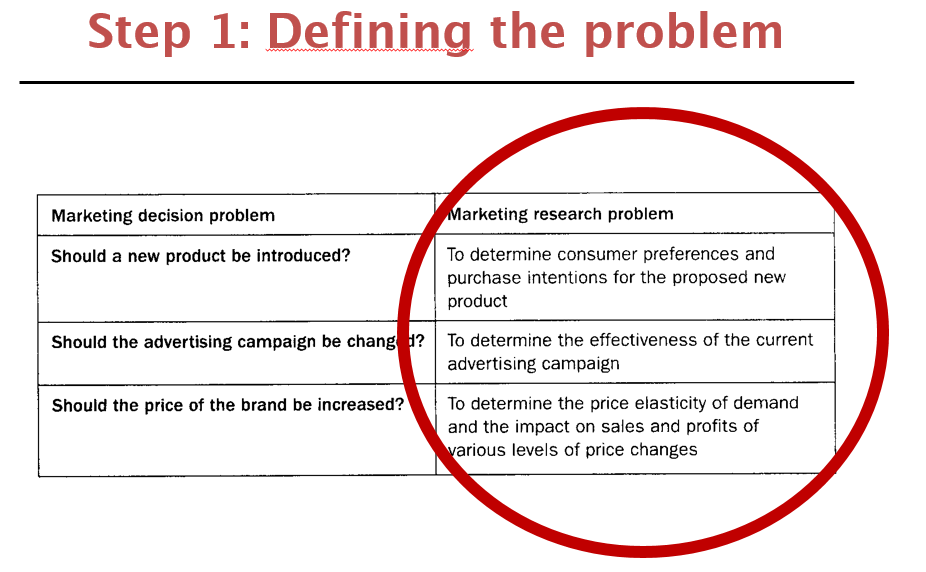

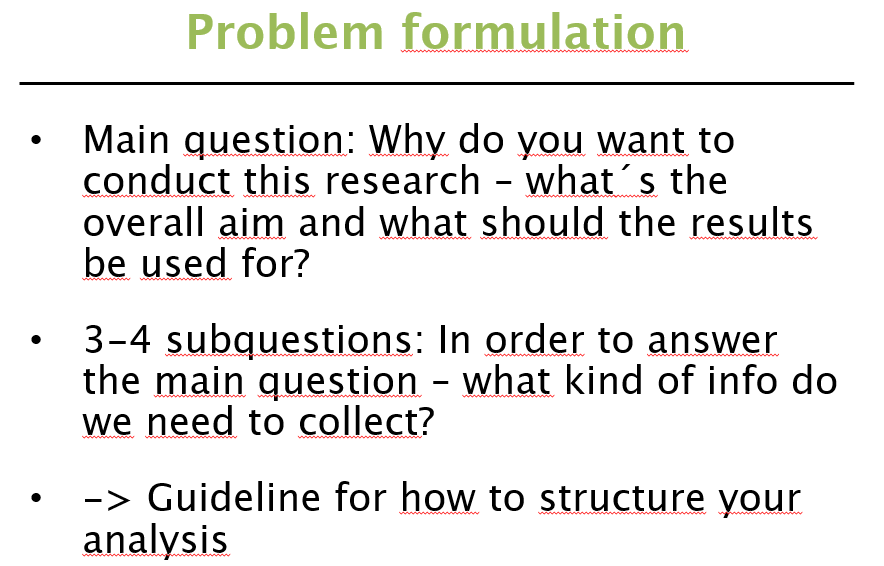
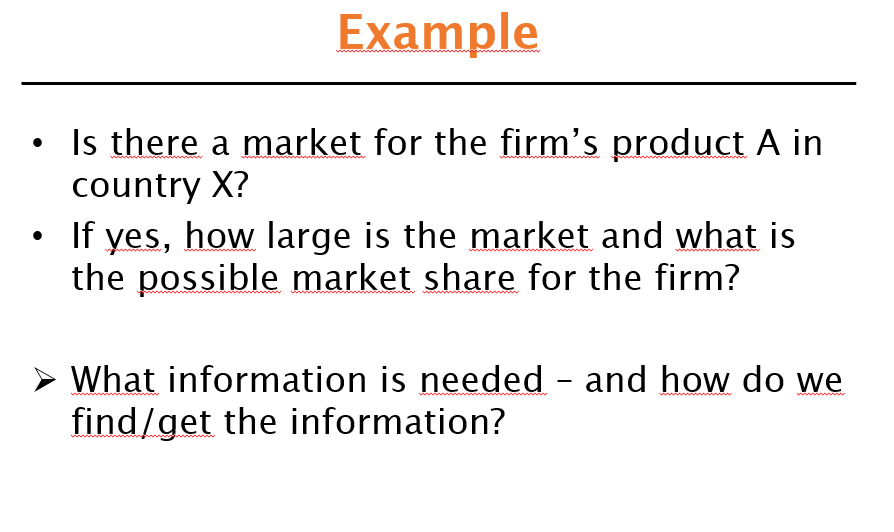
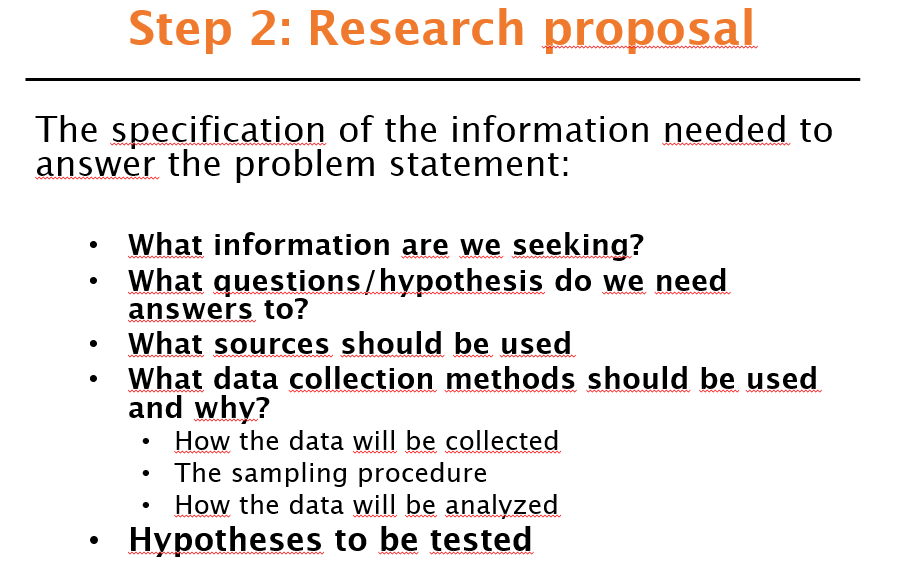

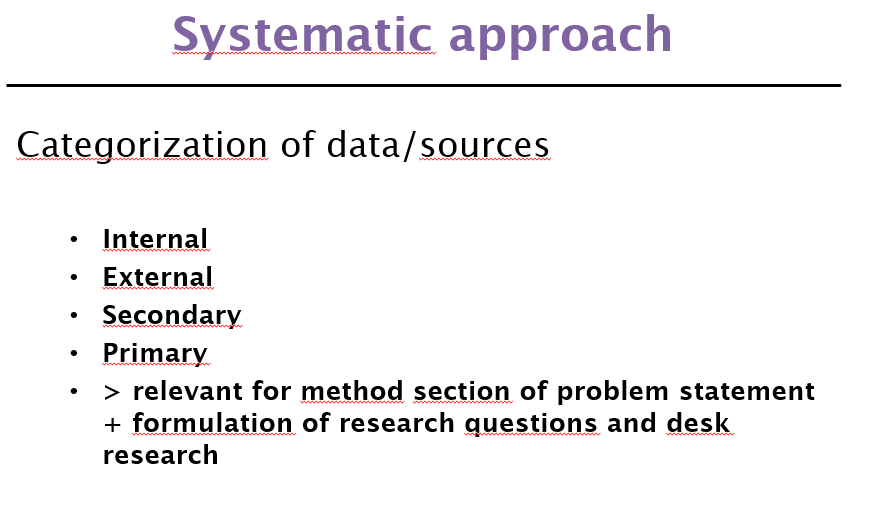

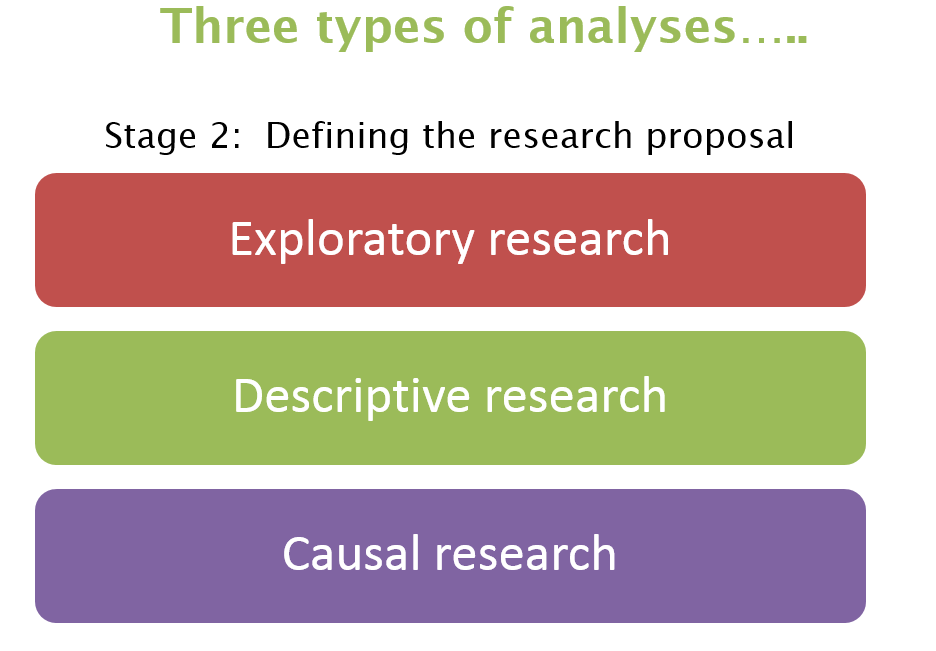


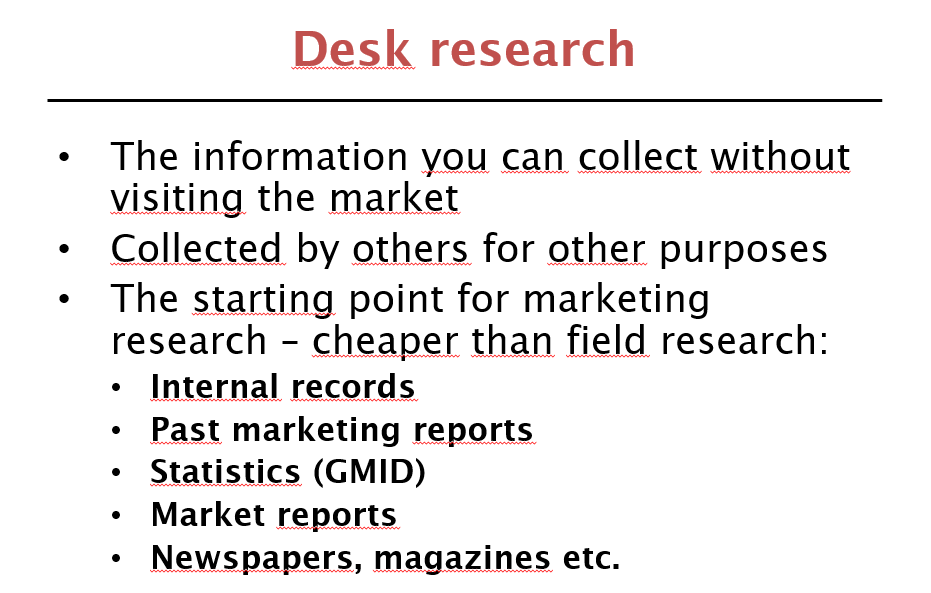
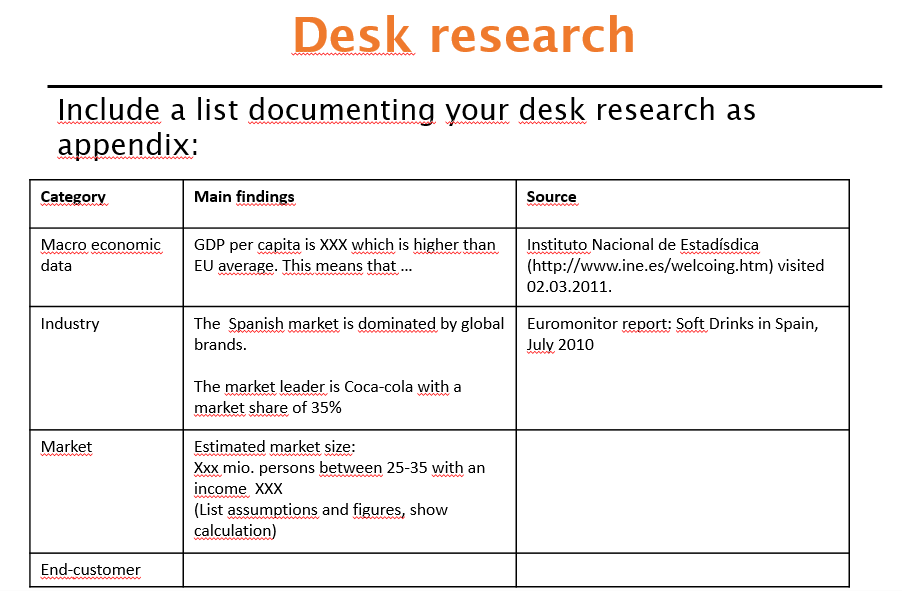
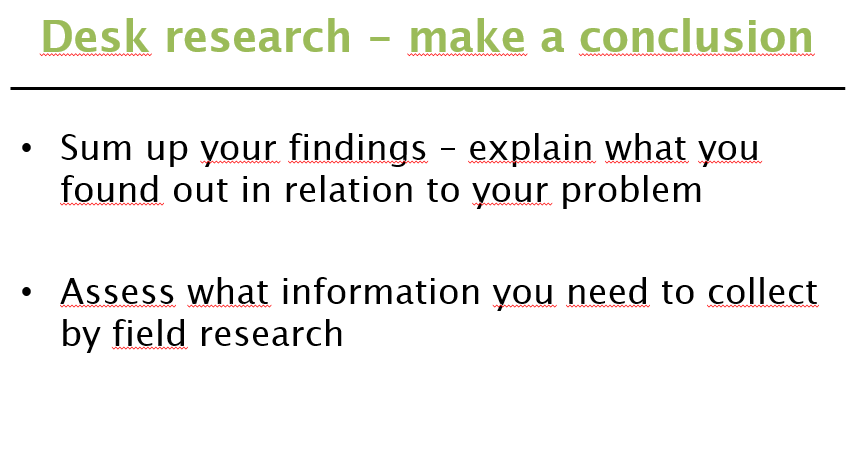

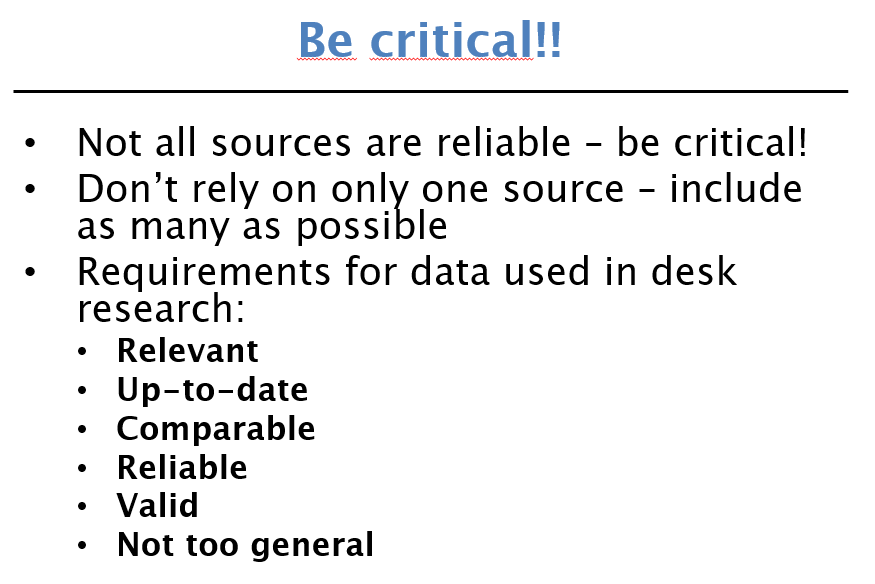
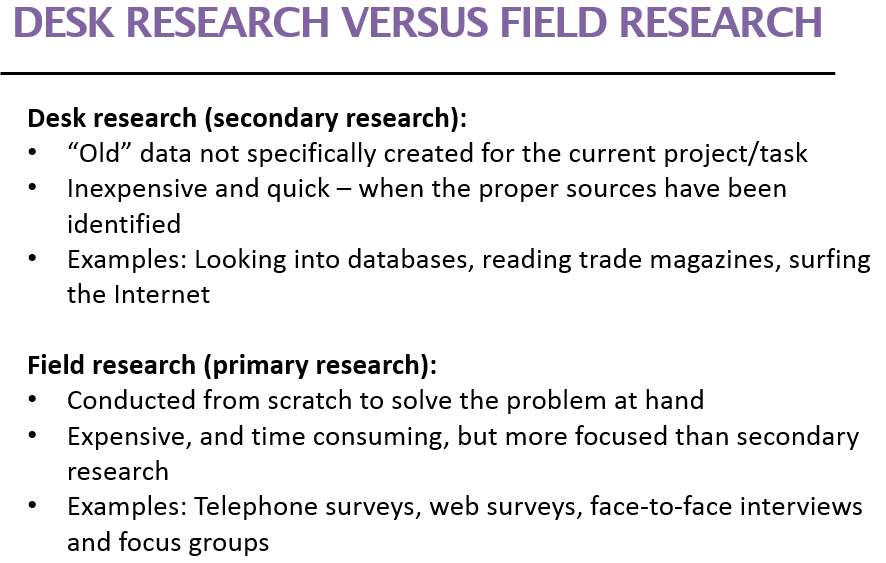
What?
Entrepreneurship is hard to define because it comprises very various ways of doing things. It is represented by human behaviour which by engaging different kind of resources (material, financial and human) results in creating (profitable) economic activity. It is unimaginable to be an entrepreneur nowadays without being innovative. Innovation means creating new products or services, but it also includes doing things differently so that the same products or services are made faster or cheaper. Those who study innovation talk about product, service or process innovations, organizational and marketing innovations.
Who?
Anyone can be an entrepreneur. Sometimes these are people with special knowledge or skills. They know about stuff they make and sell or they know how to organize other people with needed knowledge to work for them. These people organize resources and economize with them to efficiently offer products and services for the market. Innovativeness usually shows as a dose of creativity in entrepreneurs.
How?
Entrepreneurial venture may take different forms:
- Some entrepreneurs start their own venture “from scratches”. These are usually small businesses that tend to grow over time if an entrepreneur is successful, or close in a few years time otherwise.
- Other entrepreneurs buy some existing businesses and proceed their operating, usually improving the way of doing things.
- Some entrepreneurs inherit already established businesses from previous family generations. Some families prepare their heirs carefully to be able to run a business and the others do not, which can lead to an end of the business.
- And the fourth group of entrepreneurs start business by buying a franchise - a licence to copy someone else’s business, under certain terms and by obeying set rules.
What?
The European Commission sees small and medium-sized enterprises (SMEs) and their growth and innovation potential as the basis for the future prosperity of the EU. SMEs provide employment opportunities and are key players for the wellbeing of local and regional communities.
European Commission has been monitoring how SMEs manage to run their businesses and try to support them.
Who?
So, who are SMEs and how small are they?
- Micro enterprises are companies with less than 10 employees, and less than 2 mio Euro annual revenues.
- Small enterprises are companies with less than 50 employees, and less than 10 mio Euro annual revenues.
- Medium-sized enterprises are companies with less than 250 employees, and less than 50 mio Euro annual revenues.
23 million or about 99% of all companies in the EU are SMEs. They make about 2/3 of jobs. During the economic crisis of the last years they have created more jobs than large enterprises.
How?
Most of the rules of the entrepreneurship game are very complicated and are more adjusted for the large companies. To support SMEs, the European Commission issued a “Small Business Act 2008” (SBA) which aims to improve the overall policy approach to entrepreneurship (from regulation to public services) and to promote SMEs’ growth by helping them tackle the obstacles for their development (financial, mental state in people heads, access to markets).
Learn more
You can find more on the idea of “Think small first” in the Brochure issued by the European Commission “Thinking big for Small Businesses” (http://ec.europa.eu/enterprise/policies/sme/files/thinking_big_en.pdf)








